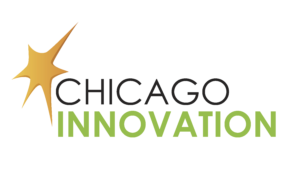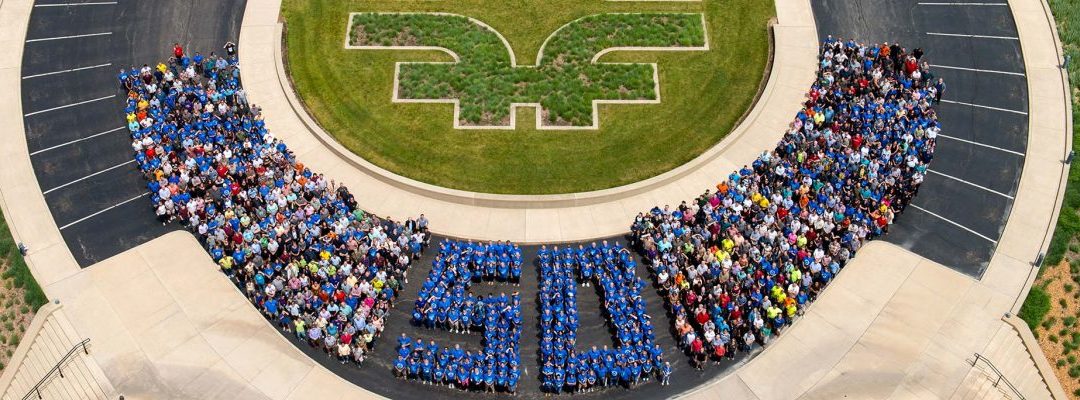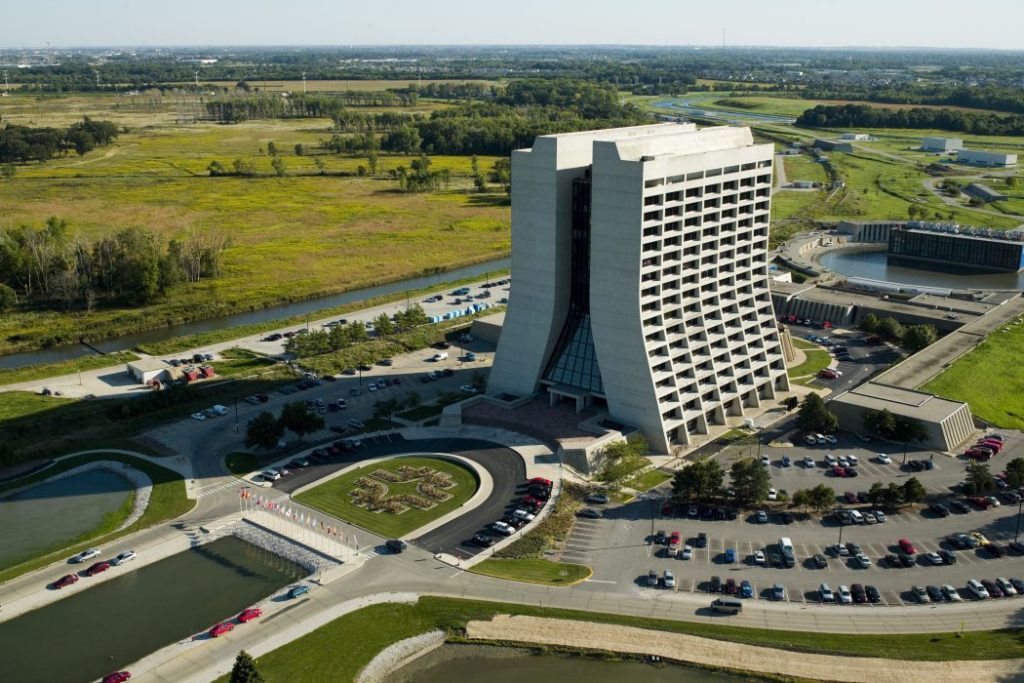by Timothy I. Meyer, Chief Operating Officer, Fermilab
This June marked 50 years since Fermi National Accelerator Laboratory (Fermilab) began operations in Illinois. Over the last 50 years, Fermilab has been home to some of the most advanced science and groundbreaking discoveries in the world. In this issue of Catalyst, we reflect on some of the lab’s greatest milestones, as well as what’s next for the institution. Happy anniversary, Fermilab!
Since the first employees reported for work on June 15, 1967, Fermi National Accelerator Laboratory in Batavia, Illinois has been home to cutting-edge research in the field of particle physics — the study of nature’s fundamental building blocks. Now, after 50 years of discovery, Fermilab continues to search for a deeper understanding of matter, energy, space and time.
In April 1963, scientists began to discuss the need for a new, national accelerator laboratory to boost the U.S. particle physics program. Nine years later, in 1972, the National Accelerator Laboratory’s first experiment, E-36, launched, and the lab’s particle accelerator reached design energy for the first time. Fermilab, as the National Accelerator Laboratory was renamed in 1974, became a place for international collaboration in pursuit of new science discoveries.
Fermilab’s first major particle physics breakthrough was the 1977 discovery of the bottom quark, the fifth of six particles in the quark family. The top quark, the last of the six quarks, remained elusive for another 18 years until Fermilab announced its discovery on March 2, 1995. Its discovery was made possible by the use of Fermilab’s Tevatron particle collider, which carried the title of world’s highest-energy particle collider for more than 20 years. The construction of the Tevatron also kick-started the superconducting wire industry, accelerating the commercialization of MRI machines.
Fermilab announced the discovery of another fundamental particle—the tau neutrino—on July 21, 2000, and played a key role in finding the long-sought Higgs boson in 2012. Research from Fermilab’s Tevatron collider as well as close collaboration between Fermilab and the experiments at CERN’s Large Hadron Collider helped make the Higgs discovery possible.
The past 50 years of Fermilab have seen some incredible discoveries, but what do the next 50 years hold? Great promise for unraveling more secrets of the universe.
Fermilab’s on-site research program is focused on neutrinos, the invisible, nearly massless particles that might be the key to explaining why matter and the universe exist. With three neutrino experiments already in operation, two more under construction, and a July groundbreaking planned for the largest neutrino experiment ever constructed, Fermilab is well on its way to becoming the world’s foremost laboratory for the study of these mysterious particles.
DUNE, the Deep Underground Neutrino Experiment, will send neutrinos 800 miles from Fermilab to the Sanford Underground Research Facility in Lead, South Dakota. Next month’s groundbreaking marks the start of excavation for huge caverns one mile underground in South Dakota that will house DUNE’s neutrino measurement apparatus. The DUNE experiment seeks to determine whether neutrinos and their antimatter counterparts behave differently, a key question to understanding why the universe exists in its current form.
Fermilab also remains a key contributor to the massive CMS experiment at the Large Hadron Collider in Geneva, Switzerland, where scientists are learning more about the Higgs boson and searching for more new particles. The laboratory is ramping up a brand-new research program to study muons, heavy cousins of electrons, in a different sort of search for new discoveries about the fundamental universe. Fermilab scientists and technology are also hard at work seeking to understand the nature of dark matter and dark energy, unknown quantities that make up 95 percent of the universe.
In parallel with these universal quests to better understand our universe, Fermilab scientists, engineers and technicians continue to push the envelope on the technologies needed for particle physics research: particle accelerators, sensors and computing. New initiatives are connecting Fermilab’s R&D teams to universities, organizations and industries that see transformative potential from these novel technologies. June’s announcements of the Chicago Quantum Exchange (with the University of Chicago and Argonne National Laboratory) and Center for Applied Physics and Superconducting Technologies (with Northwestern) are just two of the partnerships that will transform innovation using the tools of particle physics discovery.
Watch
Via the lab’s YouTube channel: Fermilab’s Dr. Don Lincoln remembers the laboratory’s first half century and looks forward to the fascinating research topics that Fermilab’s scientific staff are looking at as they leap forward into the future.
Learn more
- Fifty years of discoveries and innovations [Fermilab]
- 50 Years of Discovery: An Interactive Timeline [Fermilab]
- Daily images from Fermilab: at least one photograph taken at Fermilab every day in 2017 [Fermilab]
- From the cornfield to the cosmos: Early Development of the Lab [Fermilab’s affiliate magazine, Symmetry]
- Republicans, Democrats united to keep Argonne, Fermilab jobs [Daily Herald]
- Foster Leads Letter Requesting Job Loss Numbers Caused by Trump Budget at Science Agencies, Universities, and Laboratories [Office of Congressman Bill Foster]
- Editorial: Cutting science-lab funding won’t make America great [Aurora-Beacon News]
- Editorial: Safeguarding science from Trump [Chicago Tribune]
- Celebrate with Fermilab: Public Events Planned for 2017
What we’re reading
- In era of research cuts, romance blossoming much earlier between universities and Big Pharma [Crain’s Chicago Business]
- PROPEL celebrates 10 years and looks to future with new awards program [iBIO PROPEL]
- Seven small businesses to collaborate with Argonne to solve technical challenges [Argonne]
- The 2017 Midwest Startup and Venture Capital Market Analysis [Hyde Park Angels & Pitchbook]
- Chicago Tech Is on Pace For One of Its Best Years in VC Funding Ever [Chicago Inno]
- ISTC President & CEO joins 169 business leaders urging Gov. Rauner to sign Illinois Trust Act [Illinois Business Immigration Coalition]
- Chicago’s Global Strategy: Recapping the 2017 Chicago Forum on Global Cities [Chicago Council on Global Affairs]
- U. of C.’s Polsky Center plans big expansion into new 20-story Hyde Park complex [BlueSky Innovation]
- Hacking a Solution for Better Stormwater Management [UI LABS/City Digital]
- Here Are Illinois’ 2017 Fortune 500 Companies [Chicago Inno]
- Trump plans to dismantle Obama-era “Startup Visa” [Ars Technica]
- President Killeen issues massmail in response to continuation of state budget impasse [University of Illinois]
- U.S. News Builds Community of STEM Leaders at Sixth Annual STEM Conference [U.S. News]
- We’ve updated our (free) Illinois STEM repository to include 100+ summer programs! Search by “K-12 programs” [IllinoisInnovation.com]
Featured Opportunity: Nominate a company for the Chicago Innovation Awards!
 The mission of the Chicago Innovation Awards is to celebrate, educate, and connect innovators across all industries in the Chicago region. We invite the ISTC community to nominate the most innovative new products and services in the region for the next cycle of this prestigious honor. The winners each year are innovations that uniquely fill unmet needs, spark a competitive response in the marketplace, exceed market expectations, achieve financial success, and improve people’s lives. They emerge from the public, private, and nonprofit sectors. Most importantly, the Chicago Innovation Awards remind us that innovation is thriving in the Chicago region. More information and nominate for free here.
The mission of the Chicago Innovation Awards is to celebrate, educate, and connect innovators across all industries in the Chicago region. We invite the ISTC community to nominate the most innovative new products and services in the region for the next cycle of this prestigious honor. The winners each year are innovations that uniquely fill unmet needs, spark a competitive response in the marketplace, exceed market expectations, achieve financial success, and improve people’s lives. They emerge from the public, private, and nonprofit sectors. Most importantly, the Chicago Innovation Awards remind us that innovation is thriving in the Chicago region. More information and nominate for free here.


